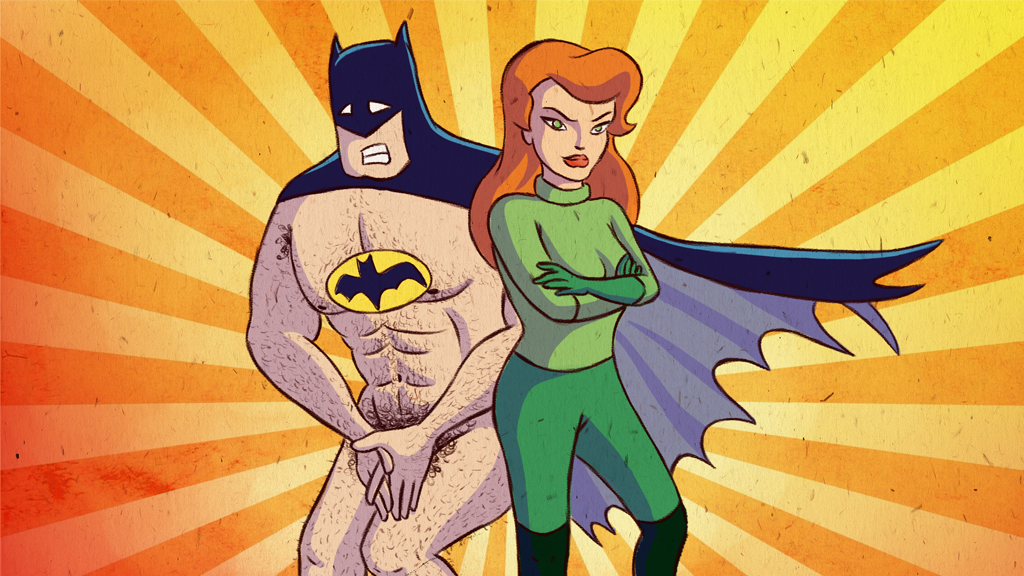Censorship and the Male Gaze: Let Batman Jr. Be Free!
by Karina Le | published Oct. 22nd, 2018
There’s been some controversy with the latest series in the Batman comics, "Batman: Damned," in its first issue. In some of the first few pages, Batman is shown to be walking around his hideout naked, and a faint outline of his junior can be seen. The horror!
"Batman: Damned"is one of the latest releases under DC Comics' Black Label, the newest imprint designated for mature readers. Despite this imprint, however, readers have reacted to the news in a variety of ways best summarized in a couple of tweets made on Twitter. Hilarious as Batman's penis picture is, the general consensus among comic fans was distaste. Some fans were so uncomfortable that it caused DC to apologize. The company stopped circulation of the issue and instead began solely producing a censored version.
However, the censorship of Batman’s nether regions brings to mind a question: why does the faint outline of a cisgender man’s lower anatomy freak people out, but not the uncensored cisgender female anatomy? In fact, when looking at the character designs, you can often see female heroes and villains dressed in body suits with "chest windows," or even almost naked. Their outfits are generally on the promiscuous side, and are used to accentuate their "assets."
These costume choices are often impractical, and with some exceptions, wouldn't be the choices for choices for people who are actually fighting. An article in The Artifice discussed this matter in depth.
"Superhero costumes are vital ... because they establish iconography and create the brand ... However ... the tradition [of drawing old female superheroes in their original outfits] is not enough to justify the continuation of sexist and impractical choices [in the costume design]," the article states.
This double-standard phenomenon is not confined to the comic universe, however. Lots of other media will often show cisgender female bodies full frontal outright, but portray a naked cisgender male bodies in a much tamer light. Even in renaissance art, ladies are often portrayed fully nude, while the men are often drawn sitting away from the painting’s lens so that their genitals would not be shown.
Male Gaze in Media
Another common place this double standard comes up is in films. The percentage of people who identify as a women make up only eight percent of directors in the Hollywood. Because of this, most narratives are generally more male-focused.
This phenomenon still persists even when a film is directed by a woman, such as "Wonder Woman." Female employees working on the film still struggled to receive basic respect, the NY Times reported.
So with the huge amount of focus on the female form, there are very few times media focuses on the male form. With the little amount that is out there, however, there is a distinct difference in presentation.
One of the few examples of hyperfixation on male bodies is “Magic Mike” (2012). But even then, the way the characters and audience treat the male body is very different. In a lot of films, female characters don’t have a say in being sexualized. In media like “Magic Mike” the characters do have a say in how they present themselves, and they’re aware they’re being sexy.
So the problem is that people aren’t comfortable with male sexual portrayals because they’re not used to them. People are fine seeing revealing depictions women’s bodies because it’s normal. So how do we fix it?
Sexualization vs. Normalization
"The Week" explained this conflict best in their article. “The real problem isn’t that we — as a culture — don’t sufficiently consider men’s biological reality. The problem is rather that theirs is literally the only biological reality we ever bother to consider,” wrote journalist Lili Loofbourow.
The article discusses how in terms of sex life, women often don’t tell men when they’re not pleasing them. In the context of media perceptions, society caters to cishetero men's pleasures.
The problem with the sexualization of women is that often they are objectified — they’re only seen as sex objects and something to conquer, rather than their own person. The "nerdy guy gets the girl" movie tropes exemplify this trend. There is nothing innately wrong with a woman wanting to dress however she wants. It’s the perception of the sexy girl in media that misconstrues a woman’s right to her own autonomy. So what does it mean when we present the cisgender male body in the same light? Would that make the situation worse?
My thought is that sexualization in media isn’t going to go away any time soon. Due to the disproportion of women to men in media nowadays, we won't be able to flood the markets with women-run media for a long time. However, we can use the system to our advantage, and use a "fight fire with fire" stance against the overproduction of sexualized women. Batman being nude will help that. By normalizing the human body, without any sexual context, it would help people understand that human bodies are just bodies. Objectification could be avoided with this normalization. I believe we shouldn’t have censored Batman. Let him be free! As a talented and beautiful singer once said, it’s equality.



